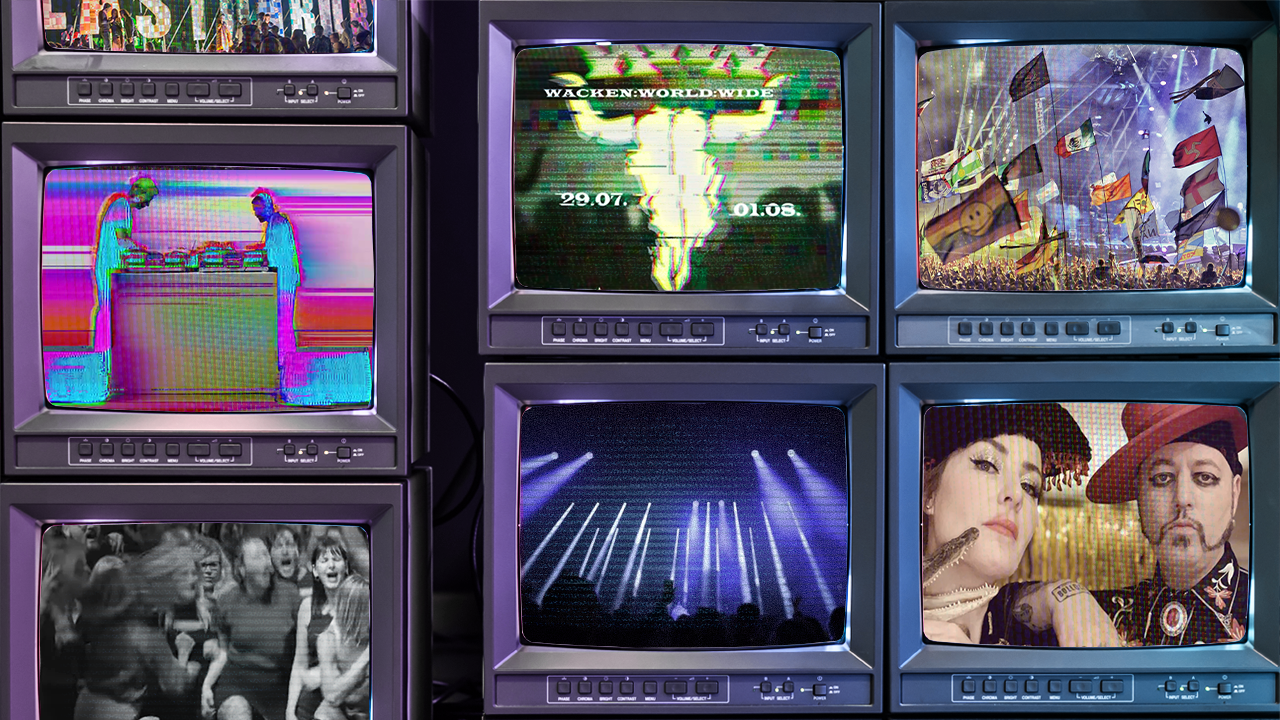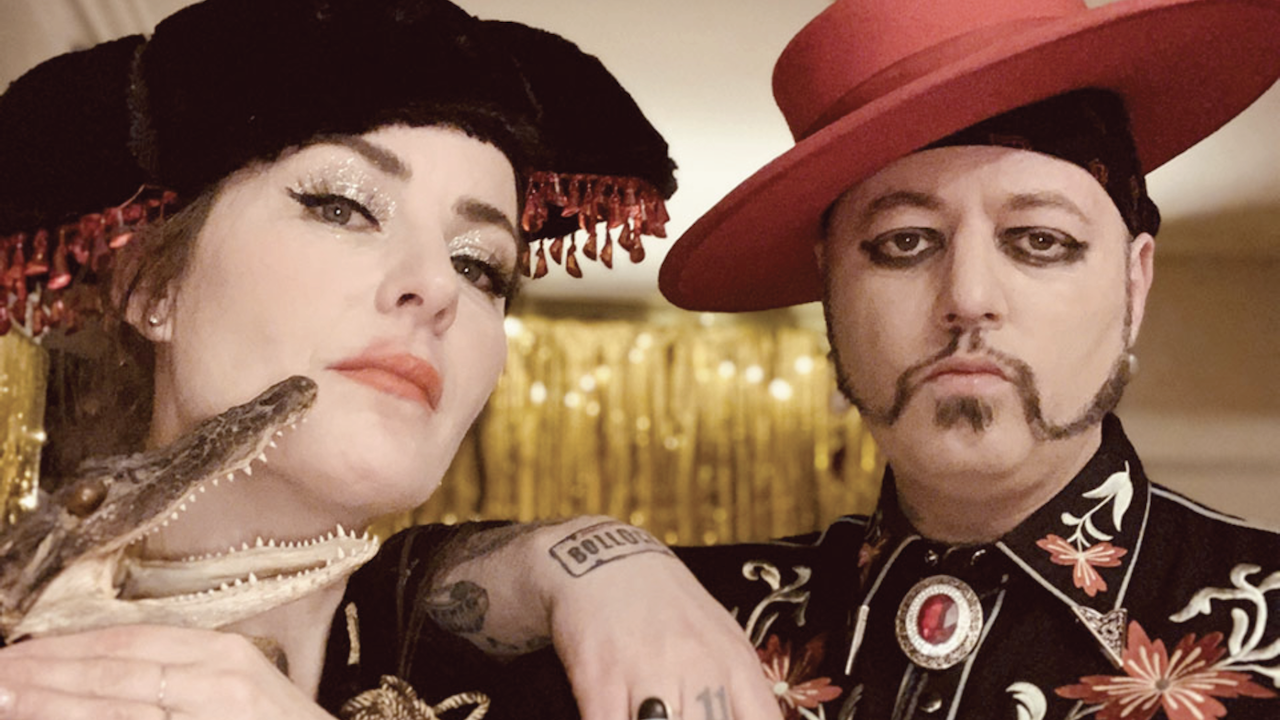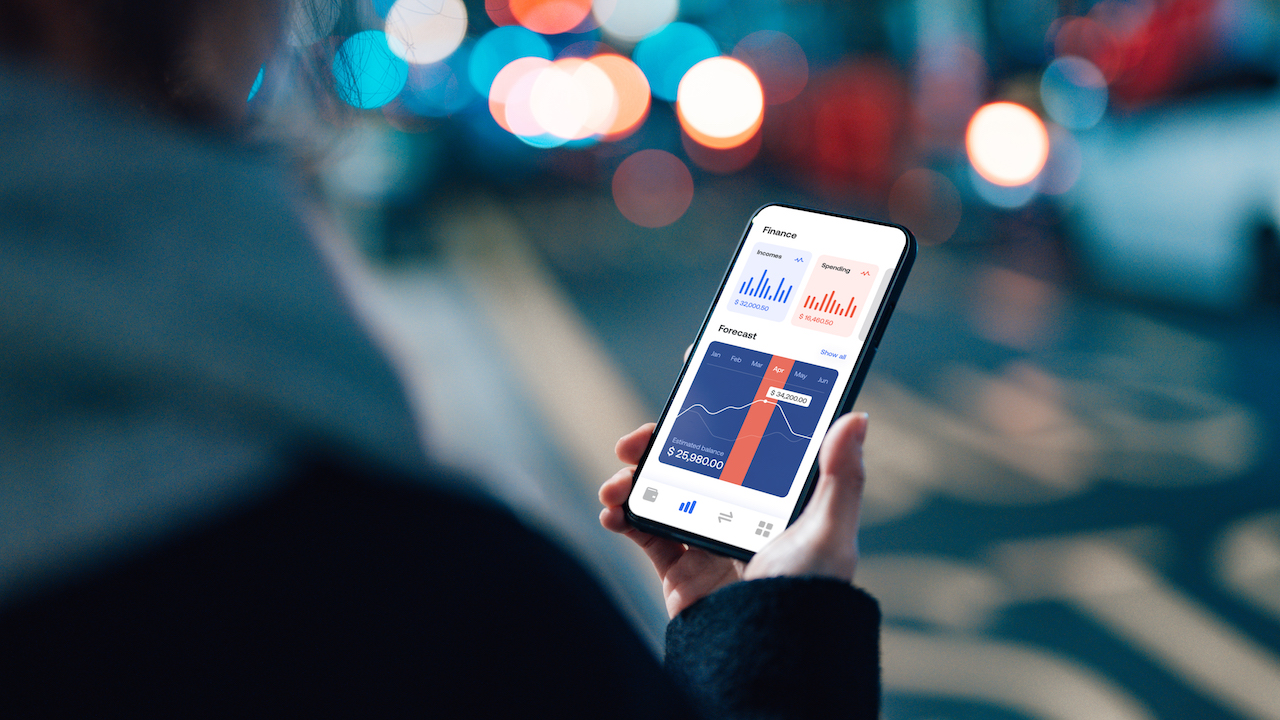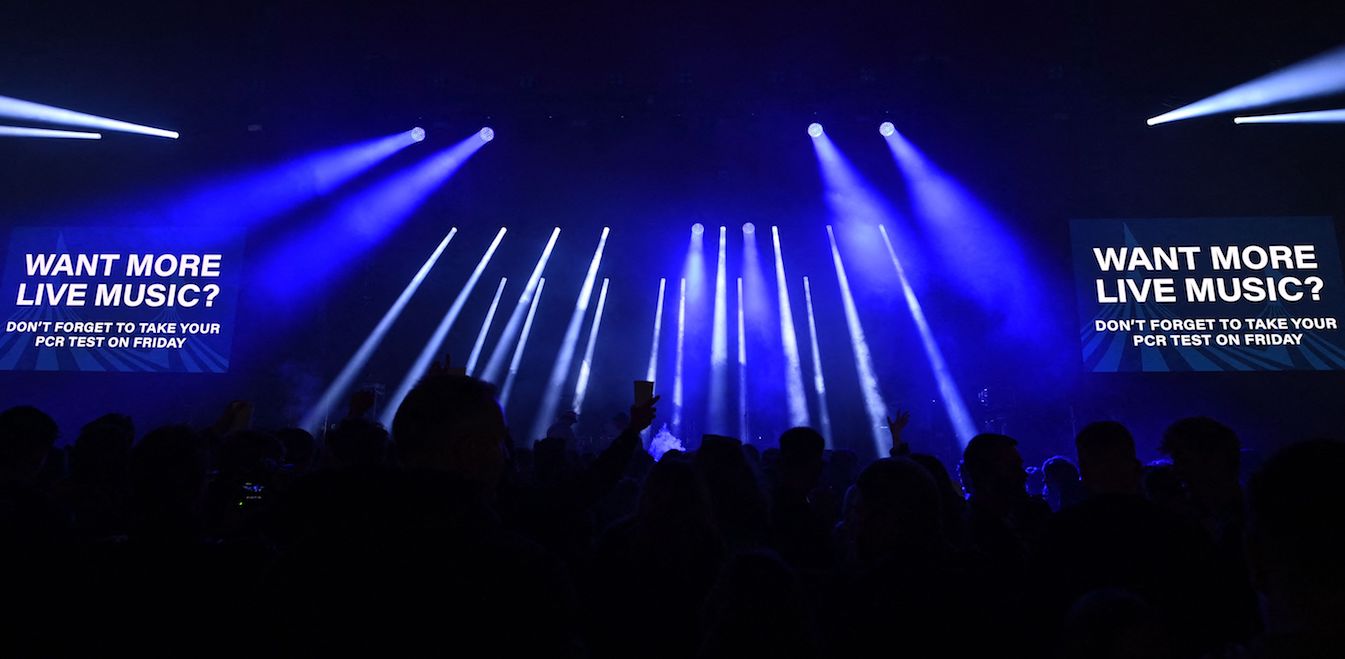Live streaming: what we learned from a year of streamed shows
Back To Live: Live stream shows were one of the highlights of lockdown. Now that live music is about to return, are they a thing of the past? No: they're the future

BACK TO LIVE: “There’s been about 10 years' worth of change in 12 months..."
Glastonbury’s Live From Worthy Farm livestream might have ended in disarray, but livestream shows look set to become a staple of the post-pandemic music scene, opening up new markets and revenues to bands of all sizes.
It’s a change that’s come at an unprecedented pace. It took the CD a full decade to become the dominant album format in the UK (finally overtaking the cassette in 1992, according to BPI numbers) and it took streaming until 2018 to become the main way albums are consumed in the UK (despite Napster paving the way in 1999).
It took just months in 2020 for livestreaming to become pretty normal.
A study by MusicWatch in August last year claimed that watching music livestreams took up 12% of total weekly time spent listening to music in Q2 (April-June) 2020, third in the list behind listening to AM/FM radio (15%) and using music streaming services (27%).
Joel Broms Brosjö, the founder and CEO of new livestreaming platform Doors, set up the company as a direct response to the pandemic. The concert business was especially vulnerable, he felt, because “no one had digitised the live sector”, meaning it was completely reliant on real-world events and had no contingency plan – a fact that was painfully exposed by the pandemic.
He says the speed of change here – from livestreaming being a niche concern to one where millions of people were watching the same show – has been nothing short of phenomenal.
The latest news, features and interviews direct to your inbox, from the global home of alternative music.
“It's a behavioural change,” he says. “I think about 10 years' worth of change has happened in 12 months. In the midst of a crisis, that's where innovation sparks. Out of necessity it grew this new category.”
So what did we learn from a year of livestreams?
1. Livestreams give bands greater global reach
At the start of 2020, livestreaming was a small and interesting niche. By the early summer it had become a gold rush, with a plethora of companies (Dice, Bandsintown, Driift, Sessionslive) and acts trying to stand up in an increasingly packed landscape. The challenge for acts went from having no shows in the real world to having to compete with everyone else in the livestreaming world.
Andrew Foggin, head of music at Dice, says there was a significant shift in how live music discovery and recommendation had to change as livestreaming started to go mainstream. “Discovery went from being very local recommendations to global recommendations,” he says.
In short, fans who would have normally been targeted for shows in their nearest city could now be targeted for shows that were effectively borderless.
“We went from selling tickets in seven countries to 146+ countries and counting,” he says of how Dice had to swiftly expand globally last year. “It's pretty wild in terms of how many countries are accessing each stream.”
Even smaller artists benefitted. “If you're an artist in a super niche genre, there might only be 25 fans in your local community, but there are 24 in Tokyo and there's 350 in Poland,” says Broms Brosjö. “All of a sudden you're using and harnessing the power of the internet and reach in a way that is really cool.”
But livestreaming didn't always capture the public's imagination or their wallets. According to Russ Crupnick, the managing partner of MusicWatch, while almost 75% of respondents in their study “rated the live stream experience as excellent or very good”, around half said they “aren’t an adequate replacement for being in person at a live performance”.
Worse still, only a third said they would be willing to pay to watch one.

2. People will pay for big productions
But they did pay.
756,000 people paid to watch K-pop giants BTS’s Bang Bang Con: The Live show in June 2020, making a minimum of $18.1 million on ticket sales. 150,000 people paid to watch former One Direction member Niall Horan at the Albert Hall in London in November, raising around £2.4 million for out-of-work touring crews.
On the same night in November, around 30,000 people paid to watch Kylie Minogue’s Infinite Disco livestream. And in December, Dua Lipa’s Studio 2054 livestream – which had a production budget of $1.5 million – drew in 5 million viewers globally. (The Dua Lipa viewership numbers are, however, based on multiple people in a household watching the same stream.)
In the metal world, Behemoth sold 12,000 tickets for their September 2020 livestream from a church in Poland, sparing no expense on the staging, costumes and pyrotechnics, with the show being filmed using a camera crew as well as drones.
Metal also provided us with the most viewed livestream in the world in 2020. Wacken festival launched Wacken World Wide: four days of streamed content, free to anyone who downloaded their app. The result was 11 million video views, according to Pollstar.
Broms Brosjö suggests that livestreaming as a medium works really well for the theatrical end of metal as it allows acts to stage new types of spectaculars that would not necessarily have been possible in a traditional show environment.
“Rock and metal bands are super well-versed to do this,” he argues. “And they have done it tremendously well given that they're very theatrical, they have this huge bond with their fanbase and they're very engaged.”
What became immediately apparent was that livestreams could not consist of just pointing a smartphone at the performance and hoping for the best. These had to be thought about and structured with the same attention and detail that went into normal shows.
“The concept has to be unique,” says Foggin. “It can't just be in an empty venue with little production. It has to feel like a really unique experience for the fans to buy into.”

3. But smaller productions can work too
These livestreaming success stories have one thing in common: they were all made by successful acts with the financial backing to put on big productions.
Just as in the traditional live business, the biggest acts grabbed most of the available money. The smaller acts – those who depended on gigs and the associated merch sales – were the ones really struggling.
Paul Ronney-Angel, frontman of London-based band The Urban Voodoo Machine, had been touring in America with rockabilly guitarist Danny B Harvey when the pandemic hit. As the tour progressed, he says, "there were less and less people at the shows each day and more and more news about this Coronavirus.”
He got home to find that all his shows, solo or with The Urban Voodoo Machine, were being postponed. They were scary times: "I don't do anything else," he says. "If I don't play music I don't eat – and I have a family now!"
Locked down in London with his fellow musician and partner Ane Angel, they figured out how to use Facebook Live and by the end of March 2020 started broadcasting every Saturday night at 8pm. At the time of writing, they've played live 62 consecutive Saturdays, getting between 1000-2000 views each week.
Fans donate tips via Paypal. It's a far cry from Dua Lipa's 5 million streams but it's all relative. "We've made enough from every show to do the weekly shopping," says Angel. More than that, he's found it a useful way of connecting with people all over the world, and an interesting platform to 'road test' new songs. He plans to continue even when touring resumes.
"It's like I have my own trash TV talk show," he says. "I don't even compare it to live shows any more."

4. You can sell merch around streams
Just like real live shows, livestreams became a way for acts to sell merchandise, pushing fans to buy from their official stores. The acts that did best here were the ones creating brand new merchandise for their livestreams rather than trying to shift the surplus stock gathering dust in the garage from their last tour.
“We did an experiment with Iggy Pop [in April] which was a rebroadcast of his Sydney Opera House show [from 2019],” explains Foggin of how this can work. “There was new merch attached to it and fans were really keen on that. I think that will continue.”
5. Do it well and people will come back for more
Are livestreams proving to be one-off novelties for viewers? Foggin says no – as long as the act puts proper thought and effort into it. He cites Belfast electronic duo Bicep as an example of an act able to not only get people to pay to watch the livestream but also to pay again watch a second livestream.
“They're one of the few acts who have done it twice and done it really well,” he says. “They did a pay-per-view stream originally and it sold around 5,000 tickets, which was unique for an electronic act as there's a big trend in livestreaming for electronic music to be free. They did it again and they upped the production, doing it within the Saatchi Gallery [in London] and doubled ticket sales which I haven't really seen done before.”
He added that in a post-show audience survey they found that 30% of the fans attending had never seen Bicep live in any format before.

6. Data from livestreams could help bands develop new markets
Which all leads into perhaps the biggest long-term benefit for artists – the data they are getting back from their livestreams. Musicians today live in a world of Big Data – having to make sense of their streaming numbers and their social media numbers and what they can do with it all – and livestreaming is giving them a whole new type of visibility on who their audiences are and where they live. Livestreaming data can now give acts a guide on consumer demand in cities – and even countries – they have never played in before. An invisible audience is, slowly, starting to become visible.
“If you're managing an artist and you're doing a livestream from London, you can see all the pockets of data from Europe in terms of who's buying,” says Foggin. “It's so influential for the agent and the team when they are planning the next run. They can see what this data is and they can use it accordingly.”

7. Livestreams are here to stay
The world in May 2021 is very different to how it was in May 2020 and there feels like real light at the end of the tunnel.
There have been important government-approved trials in the UK to test the waters for the eventual return of live music. In Liverpool at the end of April, some 6,000 people attended a warehouse rave and two days later indie band Blossoms played to 5,000 people. This was then followed by the staging of the Brit Awards on 11 May at the O2 in London with reduced attendance of 4,000 there rather than the standard 20,000 the venue can hold.
When live music returns, will anyone care about livestreams or will they become relics of the pandemic era?
Those working in the livestreaming space naturally believe they can co-exist with real-world gigging. They could also become ways that artists test demand for their physical touring. “I think you're going to see artists and labels really focusing on broadcasting one headline show before going into all these different markets and figuring out where the demand is,” suggests Foggin.
They can, he believes, be structured in such a way as to be complimentary to normal shows rather than cannibalistic by using geolocking/geofencing technology (i.e. restricting access to fans in certain countries and regions).
“If you're playing in New York and you're announcing the live show and livestream concurrently, you don't want fans in New York to be able to access that livestream,” he says. “It’s a ploy to reach fans in South America, in Canada, in other regions. I think that's going to be key and we've got that capability now to geolock where fans can buy tickets.”
Broms Brosjö also feels this will be key to how traditional touring and livestreaming can coexist in the future. “You can sell tickets in the wider area without cannibalising the fact that you do have a tour stop several days later in an adjacent town or country,” he says.
“The fact is that many people won't be able to attend so it grows the industry. Out of necessity, a new category was born – and it's here to stay, because it's very creative. In the end artists are a creative class and they love to create new ways of expressing themselves. I'm seeing this as the start rather than the end of the category evolution.”
Broms Brosjö feels that the move out of the pandemic will not be as sharp and as sudden as the move into the pandemic was, meaning that traditional gigging and livestreaming will naturally run concurrently for some time.
“The one thing that I am most convinced about is that it's not going to be normal what we go back to,” he says. “It will look a little bit like how it used to be, but I think it has evolved. One of the things that is obvious in all the discussions we have with artists, management and venues is that there's this newly found optimism and creative thinking. There’s a new way of expressing yourself as an artist.”
Foggin also believes that livestreams – or, to be more precise, good livestreams – can become an ongoing way for musicians to make money and that they will not want to abandon it completely, even when they can go back out on the road.
“It's obviously a new revenue stream that people weren't privy to previously,” he says. “Artists know that they can now reach fans all around the world a lot easier and they can really gather amazing data on who's engaging with their performances. It's a sustainable revenue stream that's here to stay.”
